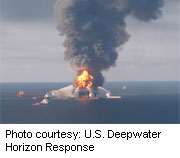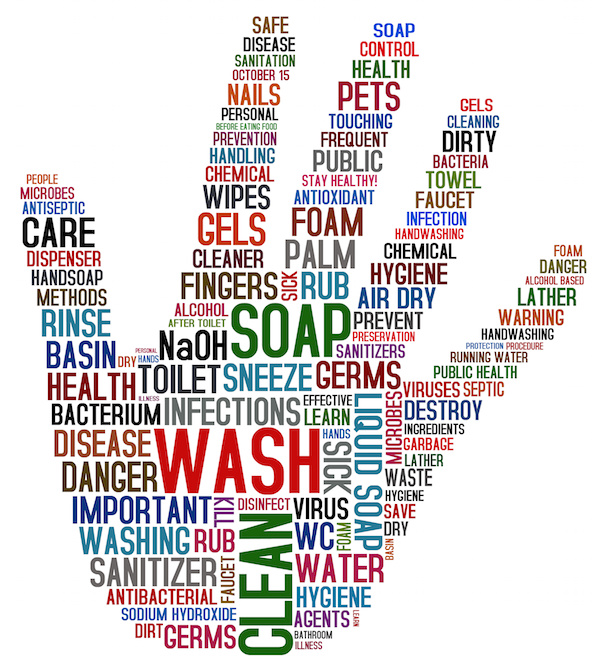
FRIDAY, May 7 (HealthDay News) — The massive oil slick menacing the Gulf of Mexico and now some barrier islands off the coast of Louisiana could prove devastating to the environment while posing risks to public health, experts say.
Some people along the coast are already reporting headaches, nausea, coughing and throat irritation, according to the Natural Resources Defense Council (NRDC), an environmental action group.
“There are significant health risks associated with this oil spill and the risks aren’t just to wildlife, they are also to humans,” said Dr. Gina Solomon, senior scientist with the NRDC. “The risks include acute health effects from the air pollution from the oil itself. It also includes health effects from burning the oil and it also includes contamination of the food chain which can result in a long-term health concerns.”
Robert Emery, vice president for safety, health, environment and risk management at the University of Texas Health Science Center at Houston, said, “Certainly uncontrolled exposure to crude oil could be potentially hazardous.”
“There are three things going on,” Emery explained. “One is health and safety issues related to the people involved in the clean-up, those most intimately exposed.
“Then, potential exposure to the general public, which is going to be much less but they could have incidental exposure,” he said.
“Third up is the potential contamination of the food supply, such as shellfish,” Emery added.
History has lessons for the present spill. Following the Exxon Valdez oil spill in Prince William Sound, Alaska in 1989, an estimated 11,000 clean-up workers made 5,600 visits to health clinics that summer for upper respiratory symptoms. That did not include visits for other health problems, according to the Alaska Daily News.
Since the BP offshore oil-rig explosion on April 20, at least 200,000 gallons of oil a day have been pouring into the Gulf of Mexico, the Associated Press reported.
Health-care workers and the general public alike could face risks by inhaling various components of crude oil, such as benzene, toluene and polynuclear aromatic hydrocarbons, all of which may cause cancer, according to the NRDC.
Crude oil also contains mercury and lead, both of which can be dangerous if inhaled or swallowed, the group stated.
“The immediate worry is what are called volatile organic compounds, which include chemicals like benzene that can be released in a vapor phase from the oil that’s floating in the water,” Solomon said. “These chemicals can cause acute health effects such as headache, nausea, vomiting, cough, dizziness. The chemicals can also cause longer-term effects, including the potential for miscarriage or low birth weight in pregnant women and risk of cancer over the longer term.”
“So far,” Solomon added, “the levels of these chemicals have been fairly low along the shore lines, so the main concern is for the emergency response workers. But we’re worried that as the oil gets closer to shore the levels of the chemicals in the air will rise. There’s some prediction that it [the oil slick] will reach shore in some areas along the coast today [Friday], though, fortunately, the prediction is for the wind to shift direction and push oil away, so I’m keeping my fingers crossed for winds that don’t push the vapors on shore.”
There are also potential dangers to the skin. If crude oil isn’t quickly rinsed off the hands and other areas of the body, it can result in redness, swelling or burning or, eventually, even skin and other cancers, the council contends.
If officials decide to burn the oil as it sits in Gulf waters, people could develop, in the short-term, coughing or even chemical burns in the airways. Longer-term effects could include cancer and chronic respiratory problems, Emery said.
There are also dangers from chemicals — called “dispersants” — used in the cleanup, Emery said. The solvent used after the Exxon Valdez calamity was limonene, which can cause skin inflammation and asthma, he said.
People with underlying respiratory conditions such as emphysema or asthma, as well as pregnant women and fishermen, are also at increased risk of health problems from the spill, Emery said.
“The general public should minimize any exposure or skin contact with this oil or vapors,” he advised, although how far vapors travel is highly dependent on wind patterns and temperatures, he added.
If people do come into contact with any of the slick, they should wash it off immediately, Emery said.
The NRDC recommends that clean-up workers or anyone who has been near the spill remove their shoes or boots before entering a home. And children should be kept away from beaches or anywhere else they could into direct contact with the spill, the council added.
Already, Louisiana residents living near the Gulf of Mexico were rushing to stock up on local seafood, worried that future catches will not be edible due to oil contamination, The New York Times reported Thursday. The shrimp, crab and fish that teem in the state’s coastal marshes are thought to be especially vulnerable.
“That marsh is really our pantry, and that’s why we are so afraid,” New Orleans chef Frank Brigtsen told the newspaper.
But the health risks — especially of very serious illness — should be kept in perspective, said Dr. Jay Brooks, chairman of hematology/oncology at Ochsner Health System in Baton Rouge, La.
“It’s still too early to say [what the actual health risks are],” he said. “It’s really hard to make these giant leaps of faith that if you eat fish that you’re going to get cancer. I think that’s very, very difficult to prove. We can’t control many things and this is something that the average citizen can’t control. The things we can control are tobacco, which has far more carcinogens than eating a fish.”
More information
The U.S. Environmental Protection Agency has more on the Gulf oil spill.

